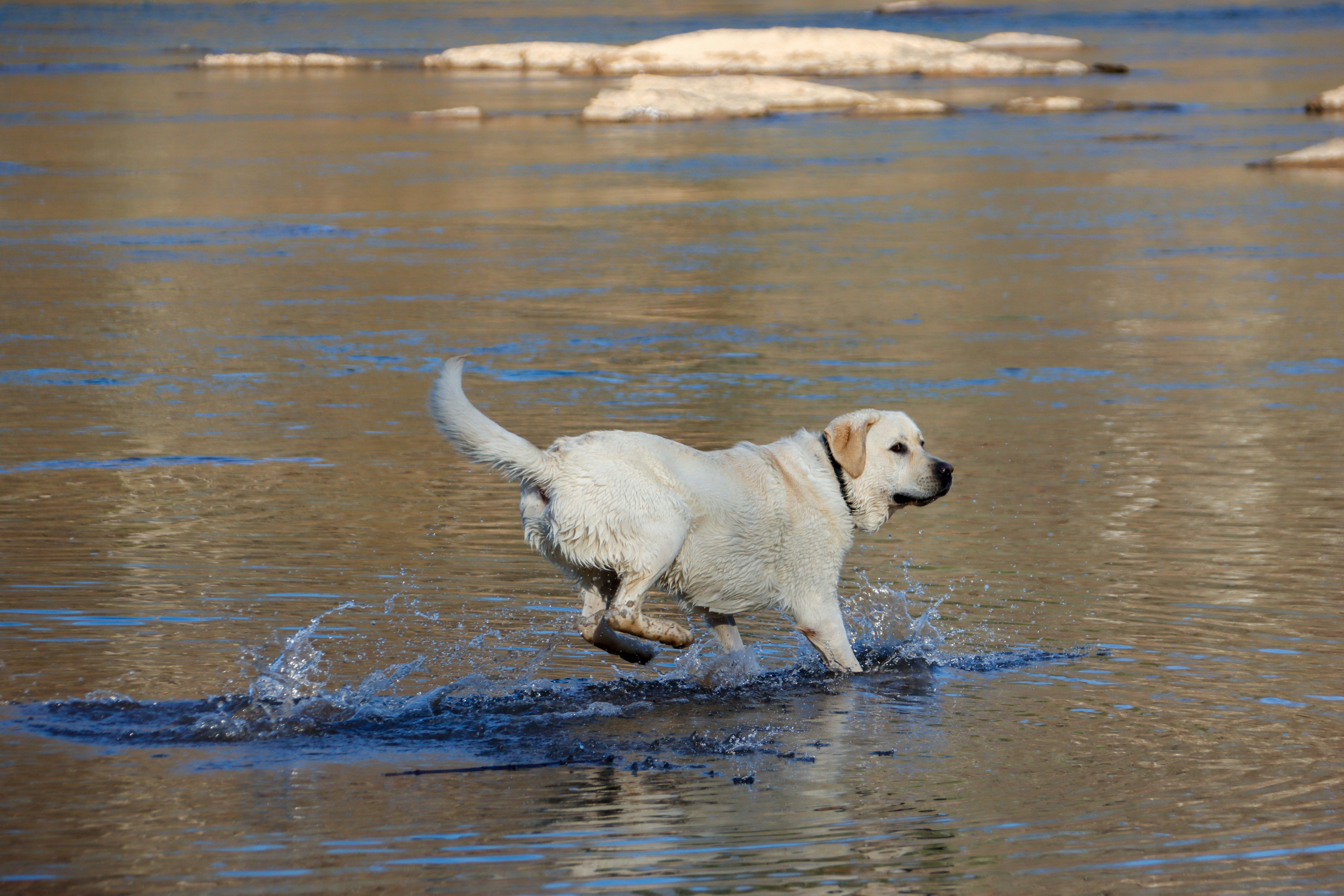As the summer months approach, we gear up for camps, vacations, pool and beach parties, and other hot weather fun. Here in Atlanta, affectionately referred to as “Hotlanta”, our hot season starts much earlier than northern areas. At this time of year, it’s important to know which events our furry friends can attend. We should also know when to leave them in the air conditioning. Heatstroke is a serious and potentially life-threatening condition that occurs when an animal’s body temperature rises to dangerous levels. Understanding how to recognize, prevent, and respond to heat stroke can keep your pets safe during sweltering temperatures.
What is Heatstroke?
Heatstroke, or hyperthermia, happens when the body cannot control its temperature. This causes the internal temperature to rise above normal. For most pets, a normal body temperature is between 101°F to 102.5°F (38.3°C to 39.2°C). Heatstroke typically occurs when the body temperature exceeds 104°F (40°C).
Why are Dogs and Cats Vulnerable?
Unlike humans, dogs and cats don’t respond to heat in the same way. Humans regulate our body temperature through a number of sweat glands all over our bodies. Dogs and cats, on the other hand, only have a few sweat glands located in their paw pads and around their noses. To cool themselves, pets release heat primarily by panting, as their paw pads and noses only minimally disperse heat.
Certain pets are more susceptible to heat stroke including:
- Brachycephalic breeds: Dogs with short noses, such as Bulldogs and Pugs, have more difficulty breathing and regulating their temperature.
- Obese pets: Extra weight can hinder heat dissipation.
- Elderly animals: Older pets may have pre-existing health conditions that can complicate temperature regulation.
- Young puppies or kittens: They may not handle heat as well as adults.
Six Signs of Heatstroke
Recognizing the signs of heatstroke can save your pet’s life. Symptoms include:
- Excessive panting: Dogs and cats may pant heavily as their body tries to cool down.
- Rapid heart rate: The heart may race in an attempt to circulate blood.
- Drooling: Excessive saliva can be a sign that your pet is overheating.
- Weakness or lethargy: Pets may become unsteady or unresponsive.
- Vomiting or diarrhea: These can be signs of severe distress. Sometimes the diarrhea can become bloody.
- High body temperature: A rectal temperature exceeding 104°F (40°C) indicates overheating.
How to Prevent Heatstroke
To prevent heatstroke, consider the following tips:
- Limit outdoor activities: Avoid vigorous exercise during peak heat hours, which typically happens around mid-day. Early morning or late evening walks are preferable. Test the heat of the pavement with your hand. If it is too hot for you to keep your hand resting comfortably, it’s too hot for your pet’s paws.
- Provide cool water: Always ensure your pet has access to fresh water and consider using ice cubes for extra cooling.
- Create shade: If your pets are outside, ensure they have shade and a cool, ventilated place to rest.
- Never leave pets in cars: Even when it feels cool outside, parked cars can get very hot in the sun. According to the CDC, after just 20 minutes on an 80-degree day, the inside of a car can hit 109 degrees Fahrenheit. After 40 minutes, it hits 118 degrees F, and after an hour, it can hit 123 degrees F. Even with the windows cracked, the inside of a car can heat up quickly, leading to dangerous temperatures.
- Grooming: Regularly brush your pet’s coat to prevent matting, which can trap heat. Consult your vet about appropriate grooming for different breeds.
What to Do If You Suspect Heatstroke
If you suspect your pet is suffering from heatstroke, take immediate action:
- Get them to a cooler environment: Move your pet to a shaded area or an air-conditioned space.
- Use cool water: Apply cool (not cold) water to their body, focusing on areas like the paw pads, armpits, and groin. You can also offer small sips of cool water. Do NOT cover them with watered down towel as this will trap the heat in and up against their body. Use a hose instead.
- Seek veterinary assistance: Take your pet to the vet as soon as possible for professional care. They may require IV fluids and monitoring to recover safely. Even if your pet’s body temperature has returned to a normal value, it’s still best to get them checked out.
Keep Your Pets Safe This Summer
Heatstroke is a serious condition, but with awareness and careful management, you can keep your pet safe during hot weather. Always monitor your pet when they are outside, stay informed about the signs of heatstroke, and know how to react in an emergency. Remember, vigilance is crucial in safeguarding the health and well-being of your furry companions during the summer months. Stay cool and enjoy the sunshine responsibly!
If you do suspect your pet has heatstroke, Ruby Veterinary Urgent Care is here to help. You can give us a call, book an appointment online, or simply walk in, and we'll get your furry friend back in top shape.



